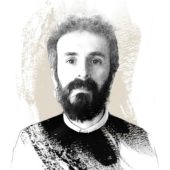This website uses cookies so that we can offer you the best possible user experience. Cookie information is stored in your browser and performs functions such as recognizing you when you return to our website or helping our team understand which sections of the website you find most interesting and useful.
-
2024
-
Amalurra. Where nature & souls connect
-
2023
-
Vestige Collection. "A story to live"
-
Hotel Riomar Ibiza. Pure escapism
-
Priscilla Ferrer. Tailoring solutions that uniquely match your needs, dreams and desires.
-
Hotelbreak. Your time, enjoy what matters
-
Puracepa Urban Suites. Living the new wine culture
-
Tótem Madrid. Discreetly iconic
-
2022
-
EscapadaRural. Green life
-
2019
-
Aguas de Ibiza. Grand Luxe Hotel. Experiential luxury restyling
-
Aguas de Ibiza. Grand Luxe Hotel. Experiential luxury restyling
-
Maymanta. Origen Perú. Nuevo restaurante de Omar Malpartida en Ibiza
-
Maymanta. Origen Perú. The new Restaurant by Omar Malpartida at Ibiza
-
Room 007 - Rebranding.
-
Palma Aquarium - Web.
-
Palma Aquarium - Web.
-
Hotel Cap Rocat - Web. Cuando el diseño genera emoción
-
Hotel Cap Rocat - Web. When Design creates Emotions
-
Club de Mar. Mallorca - Rebranding.
-
Club de Mar. Mallorca - Rebranding.
-
El Môderne Urban & Unique. Diseñar la marca de un boutique hotel urbano y único
-
El Môderne Urban & Unique. Designing the Brand of a urban and unique boutique hotel
-
Kitchening - Web y Branding Concierge.
-
2018
-
Hipotels Hotels & Resorts. Un rebranding que habla de valores
-
Hipotels Hotels & Resorts. A Rebranding that talks about Values
-
Sunrise Medical. Catálogos Quickie
-
Evelop!. Un website de altos vuelos
-
Evelop!. A high-flying website
-
Ávoris. Guía de destinos para Iberojet
-
Ávoris. Destinations guide for Iberojet
-
Gecko Hotel & Beach Club - Web. Definiendo el estilo Riviera Balear
-
Gecko Hotel & Beach Club - Web. Shaping the Balearic Riviera style
-
Akelarre. Redefinir una de las identidades de la excelencia gastronómica mundial
-
Akelarre. Reshaping one of the TOP Identities of World Gastronomic excellence
-
2017
-
Aguas de Ibiza. El lujo de lo sencillo en las cartas de Alabastro
-
Aguas de Ibiza. The luxury of simplicity in the Alabastro Restaurant Menu
-
Tótem Madrid Hotel - Web. Sofisticación y vanguardia en el corazón de Madrid
-
Tótem Madrid Hotel - Web. Sophistication and avant-garde in the heart of Madrid
-
Sant Jaume Boutique Hotel. Photoshooting para inspirar una experiencia de marca
-
Sant Jaume Boutique Hotel. Photoshooting for inspiring a Branding Experience
-
La Goleta Villas. Una marca acorde a la personalidad de cada casa
-
La Goleta Villas. A brand according to the personality of each house
-
Meliá Hotels International. 2016 Annual Report website
-
Meliá Hotels International. 2016 Annual Report website
-
Hotel Relais de Chambord - Web. Una casa de campo francesa convertida en hotel singular
-
Hotel Relais de Chambord - Web. A French country house turned into a unique hotel
-
Bodegas Torralbenc - Brand Video. La historia de amor de la que nace un vino
-
Bodegas Torralbenc - Brand Video. The love story from which a wine is born
-
Gremi de Llibreters de Mallorca. Una identidad que destila amor por los libros
-
Gremi de Llibreters de Mallorca. An identity that breathes love for books
-
Grupotel Hotels & Resorts - Producción audiovisual. Contando 50 años historias de verano
-
Aguas de Ibiza Lifestyle & Spa - Web y comunicación. El lujo apacible de la isla blanca
-
Meritus. Gamificación y entorno social para una comunidad médica de buenas prácticas
-
Meritus. Gamification and social environment for a medical community of good practice
-
Urbia Services. Una marca con latido propio
-
Urbia Services. A brand with a unique pulse
-
Unicapharma - Brand Video. Cada persona es única, sus cuidados también
-
Hotel Torralbenc. Design Concierge Service
-
Timón Hotel. Un cambio de rumbo en la tecnología humana
-
Inay. La nueva marca de renovables y autoconsumo
-
Hotel Aya. Donde cada día el amanecer huele a mar
-
Cuchillería Navarro - Web. El arte de la cuchillería a un clic
-
Clínica Pronova - Comunicación. Cuando el compromiso significa excelencia
-
Clínica Pronova - Communication. When Commitment means Excellence
-
2016
-
Palma 365 - Concurso fotográfico. Una ciudad, infinitas historias
-
Palma 365 - Photographic contest. One City, endless stories
-
The North Dock - Web. Uniones que permiten avanzar en la dirección adecuada
-
Meliá Rewards - Campaña 60 aniversario. Cumpliendo años, cumpliendo sueños
-
Meliá Rewards - 60th aniversary Campaign. Celebrating birthdays, fulfilling dreams
-
IBS Marine Electric - Rebranding y web. El renacer de una marca que nos habla sobre el mar
-
Excursiones a Cabrera - Web. Había una vez una isla mágica en la que todos se querían perder
-
Vacaciones Barceló - Servicios en destino. Dando ideas para que los viajes sean inolvidables
-
Avarcas Castell - Web y comunicación. Tradición familiar mediterránea que deja huella
-
Pure Salt Luxury Hotels - Contenidos y social media. El lujo que sabe a mar
-
2015
-
La Goleta Hotel de mar. Rebranding e implantación de marca
-
La Goleta Hotel de mar. Full Rebranding









